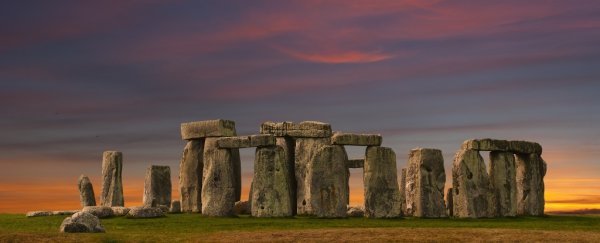Even before Stonehenge became Stonehenge, the beloved and mysterious sarsen monument we know today, it was an important place to the people of the Mesolithic and Neolithic that inhabited the region.
Bone remains suggest it was once an important burial place for at least hundreds of years - and now a new analysis has shown that people travelled from as far as western Wales – from where some of the stones are thought to originate – in order to cremate and inter their dead at the site.
The use of the site for cremations has long been known. Cremains were uncovered in excavations in 1919-26, from at least 58 individual skeletons, in what are known as "Aubrey holes". These holes had once been filled with cremains, with bluestone markers placed on top. The remains were subsequently re-buried in one Aubrey hole, to be excavated again in 2008.
And these remains included 25 occipital fragments, bone from the base of the skull, dating back to as early as 3180 BCE, according to radiocarbon analysis. The stone circle was erected in around 2500 BCE.
It's these 25 fragments that researchers from Vrije Universiteit Brussel in Belgium examined with their strontium isotope analysis.
This is a technique usually performed on teeth, which retain strontium isotopes incredibly well. These isotopes can be found in the soil, and are taken up into plants. When the plants are eaten by a person, these isotopes replace some of the calcium in teeth and bones.
The strontium isotopes can be matched to geographical regions, and in turn can help identify what a person has eaten and where they are from.
It gets a little trickier with cremains. The tooth enamel, which provides a profile dating back to childhood, is destroyed by the high temperatures. But bone that has been burnt at these higher temperatures can become calcined – which has also been discovered to reliably preserve strontium isotopes.
Unlike tooth enamel, it only reflects an average of the foods eaten in the last decade before death, but this is still sufficient to be able to determine where someone spent most of that time. And the occipital fragments were, indeed, calcined.
In analysing 25 of the fragments, the researchers found that 15 of the skulls belonged to people who had lived in the local area, near Stonehenge.
But the remaining 10 had come from much farther afield. These ancient humans had travelled over 200 kilometres (125 miles) from western Britain. Given that some of the sarsens have been linked to specific quarries in Wales, the researchers believe it's likely that the people are from the same region.
They also found evidence that some of the wood used to burn the corpses had originated in Wales, and that the remains had been transported to the Stonehenge site post-cremation.
"All the measurements fall between the biologically available strontium values for Stonehenge and west Wales, consistent with people moving between the two locations at different times in their lives," the researchers wrote in their paper.
"Finally, the results suggest that at least some 'non-local' individuals were cremated away from Stonehenge, and that their cremated remains were brought to the site for burial, perhaps in conjunction with the raising of the bluestones."
The purpose of Stonehenge is still shrouded in mystery, but it's clear that it has been deeply important to humans for thousands of years. It's possible that it has played multiple roles in that time.
The team's research has been published in the journal Scientific Reports.
